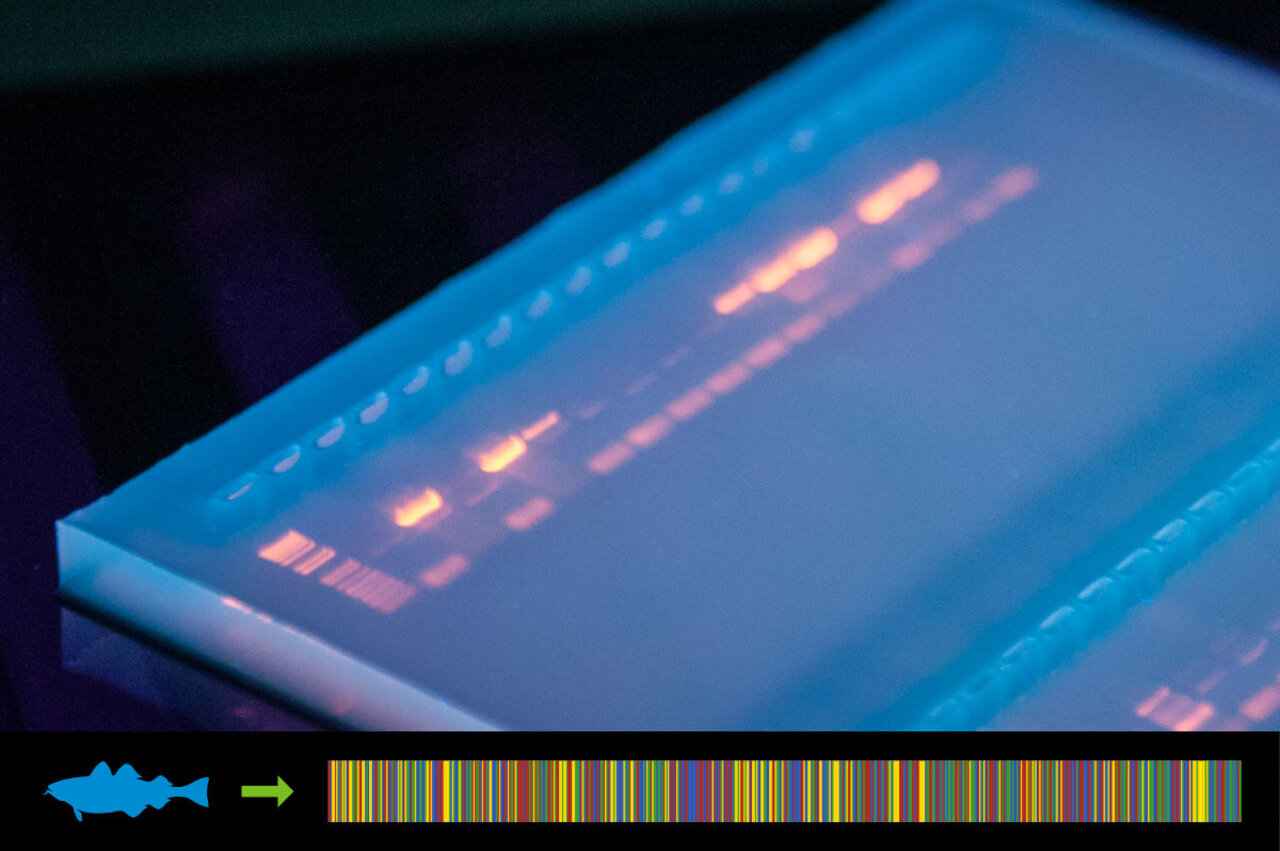Project
Fish identification by genetic barcoding

New innovative approaches for the identification of fishes and fisheries products of diverse species and populations – a contribution to consumer safety and containment of illegal fisheries
Tracing the origin of fishes serves consumer safety and helps to contain illegal fishing. In this project East Atlantic fishes are characterized.
Background and Objective
The Central East Atlantic is a major source for fish imports to the European markets, including Germany. The relatively high species diversity and widespread lack of controls often leads to mislabeling of fisheries products. Such false declarations obscure illegal catches due to impossible traceability and may pose a risk for consumer safety. Especially processed fisheries products are often indistinguishable from each other by morphological characters. Hence, genetic methods for species determination gained increasing popularity. One important requirement for a successful genetic screening is the existence of validated standards. The aim of the project is to characterize all commercially important fish species from the East Atlantic genetically from voucher specimens by means of four genes. All data will be publicly available in a database.
Tracing the origin of migrating species is especially difficult. Exemplified for the heavily exploited yellow fin tuna (Thunnus albacares) the project is additionally intended to identify genetic markers that characterize manageable stocks by whole genome sequencing.
Publications
- 0
Lopes EP, Monteiro V, Martins A, Coelho R, Freitas R, Blancke T, Hanel R (2021) Confirmed record of the roughear scad Decapterus tabl in the Cabo Verde Archipelago based on morphological and genetic data. Zoologia Caboverdiana 9(1):3-13
- 1
Barth JM, Damerau M, Matschiner M, Jentoft S, Hanel R (2017) Genomic differentiation and demographic histories of Atlantic and Indo-Pacific Yellowfin Tuna (Thunnus albacares) population. Genome Biol Evol 9(4):1084-1098, DOI:10.1093/gbe/evx067
- 2
Damerau M, Freese M, Hanel R (2017) Multi-gene phylogeny of jacks and pompanos (Caragidae), including placement of monotypic vadigo Campogramma glaycos. J Fish Biol 92(1):190-202, DOI:10.1111/jfb.13509

![[Translate to English:] [Translate to English:]](/media/_processed_/2/9/csm_Embryo-Exp_Gelege_9F_dpf5-200513111619_c8534a8199.jpg)
![[Translate to English:] [Translate to English:]](/media/_processed_/2/9/csm_Embryo-Exp_Gelege_9F_dpf5-200513111619_9027994d44.jpg)





